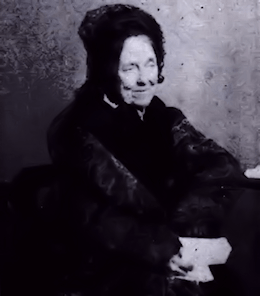Textus Receptus Bibles
Julia E. Smith Translation 1876
| 5:1 | And I shall turn back and lift up mine eyes and see, and behold, a roll flying. |
| 5:2 | And he will say to me, What seest thou? And saying, I see a roll flying; its length twenty by the cubit, and its breadth, ten by the cubit |
| 5:3 | And he will say to me, This the curse going forth upon the face of all the earth: for every one stealing from thence was empty like it; and every one swearing from this was empty like it |
| 5:4 | I brought it forth, says Jehovah of armies, and it came into the house of the thief, and into the house of him swearing for falsehood in my name: and it lodged in the midst of his house, and it finished it and its wood and its stones. |
| 5:5 | And the messenger speaking with me will go forth and say to me, Lift up now thine eyes and see what this going forth. |
| 5:6 | And saying, What is it? And he will say to me, This the ephah going forth. And he will say, This their eye in all the earth. |
| 5:7 | And behold, a talent of lead was lifted up: and this one woman sitting in the midst of the ephah. |
| 5:8 | And he will say, This injustice. And he will cast her into the midst of the ephah; and he will cast a stone of lead upon its mouth. |
| 5:9 | And I shall lift up mine eyes and see, and behold, two women will come forth, and the wind in their wings; and to them wings as the wings of the stork; and they shall lift up the ephah between the earth and between the heavens. |
| 5:10 | And saying to the messenger speaking with me, Whither do they carry the ephah? |
| 5:11 | And he will say to me, To build for it a house in the land of Shiner: and it was prepared, and set there upon her base. |

Julia E. Smith Translation 1876
The Julia Evelina Smith Parker Translation is considered the first complete translation of the Bible into English by a woman. The Bible was titled The Holy Bible: Containing the Old and New Testaments; Translated Literally from the Original Tongues, and was published in 1876.
Julia Smith, of Glastonbury, Connecticut had a working knowledge of Latin, Greek and Hebrew. Her father had been a Congregationalist minister before he became a lawyer. Having read the Bible in its original languages, she set about creating her own translation, which she completed in 1855, after a number of drafts. The work is a strictly literal rendering, always translating a Greek or Hebrew word with the same word wherever possible. Smith accomplished this work on her own in the span of eight years (1847 to 1855). She had sought out no help in the venture, even writing, "I do not see that anybody can know more about it than I do." Smith's insistence on complete literalness, plus an effort to translate each original word with the same English word, combined with an odd notion of Hebrew tenses (often translating the Hebrew imperfect tense with the English future) results in a translation that is mechanical and often nonsensical. However, such a translation if overly literal might be valuable to consult in checking the meaning of some individual verse. One notable feature of this translation was the prominent use of the Divine Name, Jehovah, throughout the Old Testament of this Bible version.
In 1876, at 84 years of age some 21 years after completing her work, she finally sought publication. The publication costs ($4,000) were personally funded by Julia and her sister Abby Smith. The 1,000 copies printed were offered for $2.50 each, but her household auction in 1884 sold about 50 remaining copies.
The translation fell into obscurity as it was for the most part too literal and lacked any flow. For example, Jer. 22:23 was given as follows: "Thou dwelling in Lebanon, building as nest in the cedars, how being compassionated in pangs coming to thee the pain as in her bringing forth." However, the translation was the only Contemporary English translation out of the original languages available to English readers until the publication of The British Revised Version in 1881-1894.(The New testament was published in 1881, the Old in 1884, and the Apocrypha in 1894.) This makes it an invaluable Bible for its period.